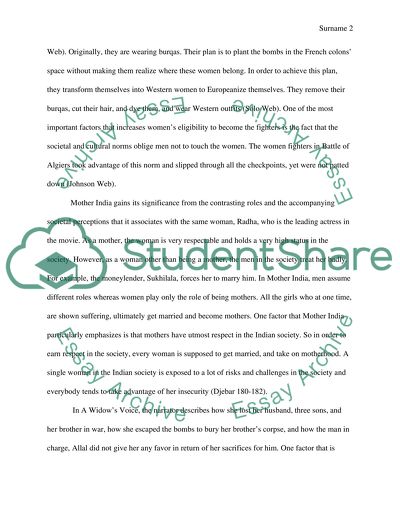Cite this document
(“Gender Behaviors in Battle of Algiers, Mother India and A Widows Voice Essay”, n.d.)
Retrieved from https://studentshare.org/visual-arts-film-studies/1607632-gender-behaviors-in-battle-of-algiers-mother-india-and-a-widows-voice
Retrieved from https://studentshare.org/visual-arts-film-studies/1607632-gender-behaviors-in-battle-of-algiers-mother-india-and-a-widows-voice
(Gender Behaviors in Battle of Algiers, Mother India and A Widows Voice Essay)
https://studentshare.org/visual-arts-film-studies/1607632-gender-behaviors-in-battle-of-algiers-mother-india-and-a-widows-voice.
https://studentshare.org/visual-arts-film-studies/1607632-gender-behaviors-in-battle-of-algiers-mother-india-and-a-widows-voice.
“Gender Behaviors in Battle of Algiers, Mother India and A Widows Voice Essay”, n.d. https://studentshare.org/visual-arts-film-studies/1607632-gender-behaviors-in-battle-of-algiers-mother-india-and-a-widows-voice.


